No matter what kind of artist you are, a website for displaying and selling your work is essential for building your business. Follow these tips and take inspiration from these examples to make your art website shine.
What Your Artist Website Needs
Though no two artist websites are the same, there are a few things that every artist should include on their site for it to do its job. These include:
- Your Name
- Homepage or Landing Page
- High Quality Images of Your Work
- Artwork Descriptions
- The Right Website Template
- Clear Indication if the Piece is For Sale
- About Page
- Contact Information
- Testimonials
1. Your Name
Your name is the first step in building your brand. You should include it in your domain name and on the homepage of your website.
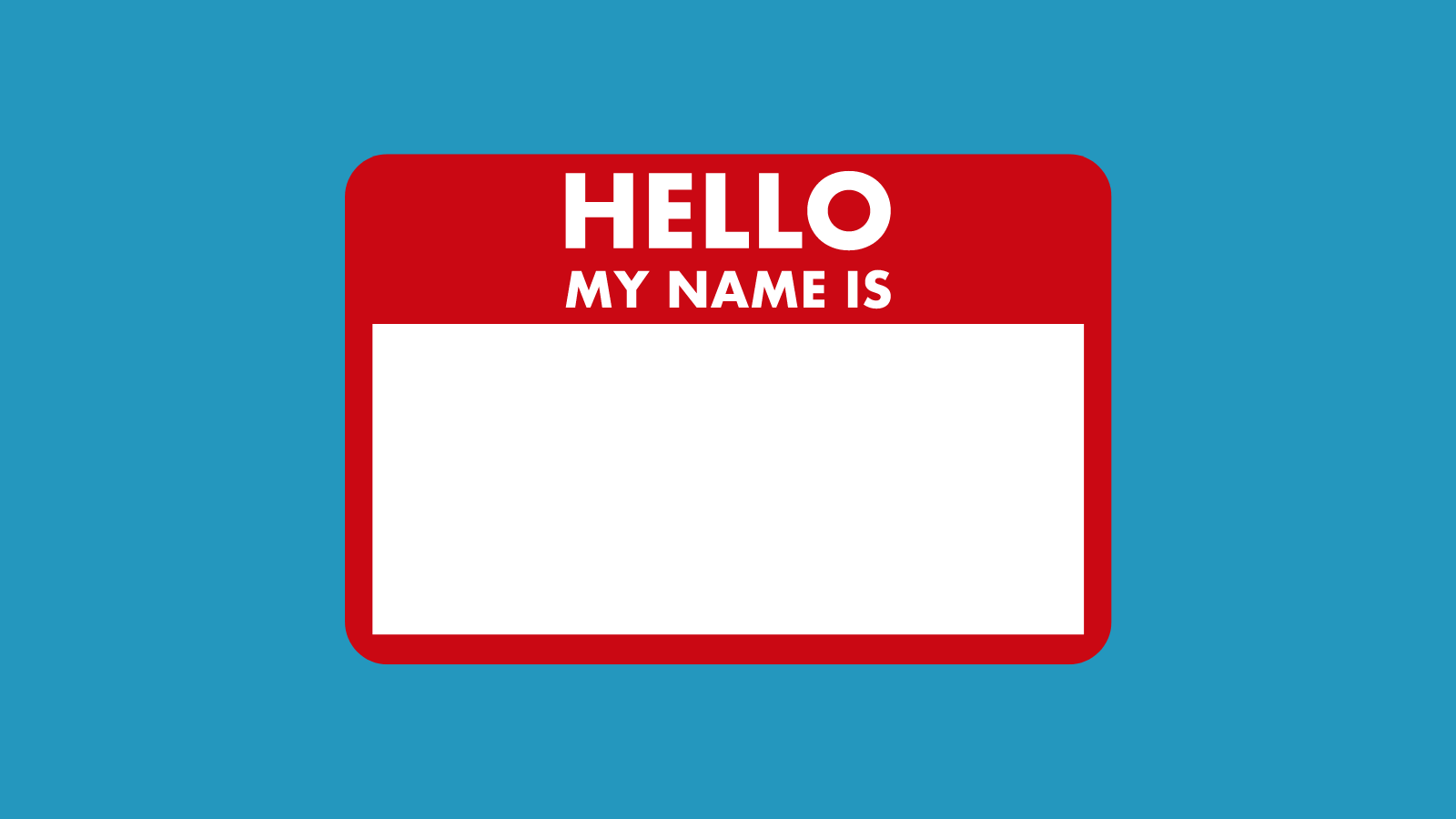
2. Homepage or Landing Page
The homepage or landing page is a welcome mat to your art site. The main function of this page is to make a good first impression and to make it easy for visitors to navigate to other pages of the site. Include a call to action near the center. Something like “Buy my work” or “See my work” would do the job.
![]()
3. High Quality Images of Your Work
Work examples are where you let your work shine. Do your work justice with high-quality photos of 6-10 of your best projects. You can put them in a photo gallery or a dedicated projects page. Sharing different stages of your creative process gives website visitors an even better look into what makes you tick as an artist. You can do this with
- Before and after photos
- Sketches
- Time-lapses
- Write-ups
- Mood boards
- And more!
.png?width=1600&name=An%20illustration%20of%20a%20camera%20(1).png)
4. Artwork Descriptions
Every piece of art you display on your website, whether it’s for sale or as a work example, should come with a brief description of the most important details, including:
- Title
- Medium
- Dimensions
- Price
- Year
That way, customers who are looking to buy and clients who are looking to commission your work can make an informed decision. The words in these descriptions can also serve as SEO keywords to make your website more searchable.

5. The Right Website Template
Using a website builder is the easiest, most cost-effective way to create your own art website. Whichever website builder you use will have a variety of art portfolio templates to choose from. Pick one that matches your style but makes your work the star.

6. Clear Indication if the Piece is For Sale
Not every piece of art on your own site has to be currently for sale, but website visitors should be able to easily tell the difference between pieces that are for sale and pieces that are simply work examples.

6. About Page
The About Page is the place to tell the story of your work and yourself as an artist. A resonant narrative is a surefire way to set you apart from other artists who work in a similar niche or style. In this story, highlight what makes your work unique, your mission as an artist, and what you hope to accomplish in the future.
The tone of your about page should be true to you and your work. This could mean using humor, pulling visitors in with emotion, or keeping it straightforward. It should give people who read it a strong sense of who you are as an artist.

7. Contact Information
An important part of any business or personal website is making it easy for viewers to contact you. Make sure your website includes:
- Your location
- Your mailing address
- Your phone number
- Your email address
- Where they can find you on social media
Either on a dedicated contact page, part of your main menu, or in the site footer. Or, even better, create a contact form for your site so visitors can get in touch with you without leaving the site.
![]()
8. Testimonials
If you’re looking for freelance clients or commissions, testimonials from previous clients can provide powerful social proof of what you’re like to work with.
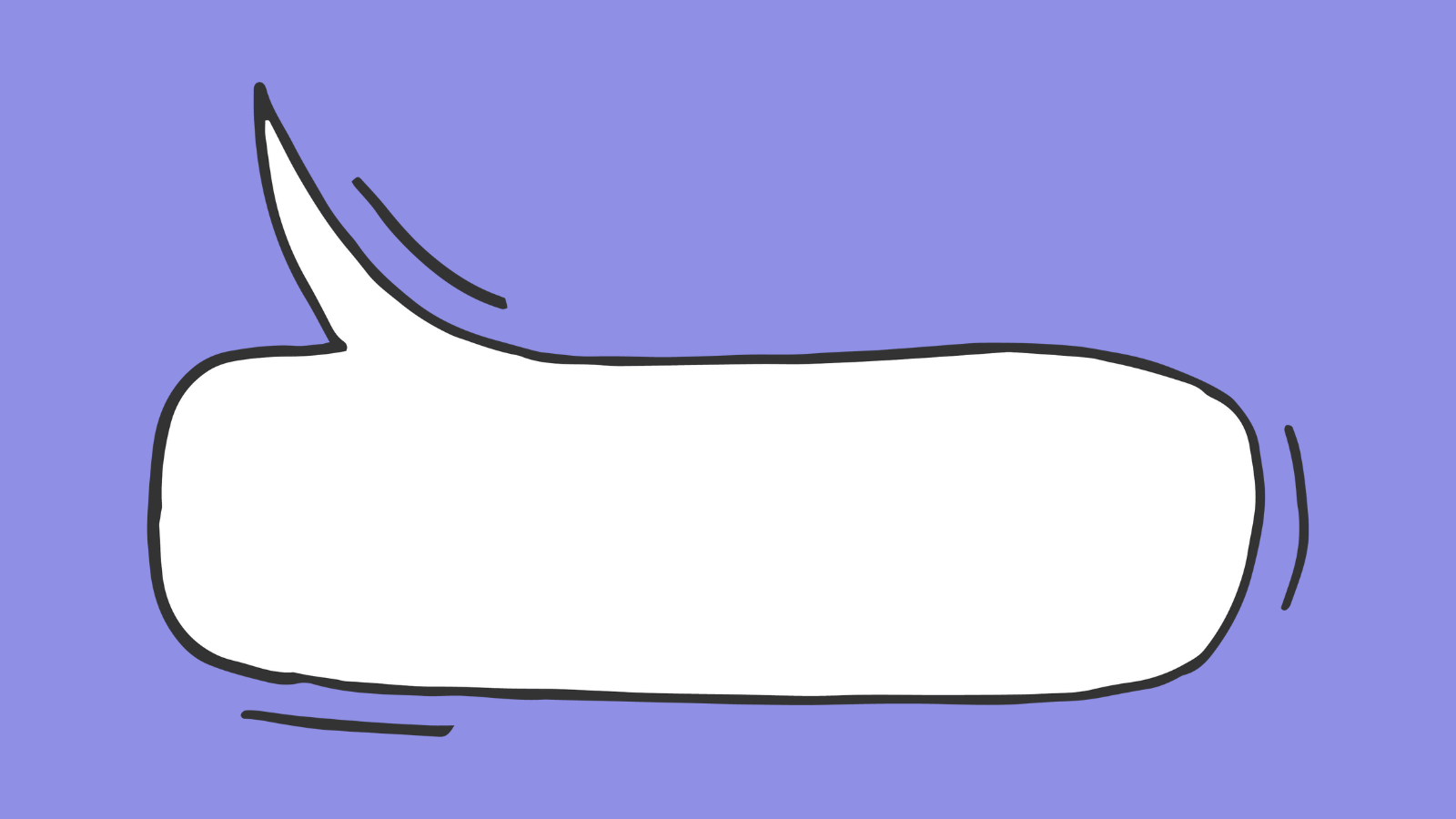
Keep These Off Your Site
Now that you know a few things that you should include on your own website, let’s look at a few things to avoid.
Music
Including music on your website is distracting at best. If it autoplays, it can be a flat-out unpleasant experience. Videos and animations that can still work without audio are fine if that’s the kind of work you do, but including music just for the sake of it won’t do you any favors.
Display Ads
Display ads can be a way to make a passive income on some websites, but they’re not a good idea on an artist site. You don’t want anything to distract viewers from your art.
Other Artist’s Work
Your website is all about your work. Including art by other artists, even if it’s to show inspirations for your style could confuse some visitors.
.png?width=1600&name=No%20(1).png)
How to Make Your Art Website Stand Out
There are a ton of artists with websites out there. How do you make yours stand out above the noise?
Get Inspiration From Other Artists
Take a look at the art portfolios of artists you admire. Pay attention to how they present their work, their web design choices, the written content on the site, and the types of samples they choose to display. Whether you’re a painter, sculptor, graphic designer, photographer, or any other kind of visual artist, you’ll find others out there you can learn from to create a stellar portfolio website.
.png?width=1600&name=A%20lightbulb%20lighting%20up%20(1).png)
Curate Your Art Portfolio
A robust work portfolio on your website isn’t a one-and-done task. It needs to be curated over time. As your work volume grows, how you lay it out on your website is likely to change. Sort your work into categories instead of putting it all on one web page to make it easy for visitors to consume in pieces. How you structure this could shape a narrative of your work.

Tell Your Story
On that note, an artist portfolio isn’t just for displaying your art. It’s a chance for visitors to connect with you as an artist. This includes
- Telling them about yourself
- Telling them about your inspiration
- Taking them behind the scenes of your work
An About page, adding a blog to your online portfolio, and even the structure of your art examples are all places where you can tell your story as an artist.

Management Tips for Your Artist Website
You’re not done with your website when it goes live. Websites require routine management so they can continue to work well and meet your goals.
Update Regularly
Update your website with new art at least once a year. If you can update it more often, do. Updating your website frequently shows users that you’re still active and working and keeps the image of yourself and your work that you’re curating current.
.png?width=1600&name=Update%20(1).png)
Maintain Your Site
In addition to updating your work, you should check to make sure the pages and links on your site are still working, run a backup for your site, remove all spam comments, and update any software and plugins. These types of maintenance checks make sure your website is functioning well and providing the best possible user experience.

Check Your Messages
If you have a contact form on your website, make sure you check your inbox for new messages regularly. If you change your phone number or your email address, be sure to update it on your website as soon as you can.

12 of The Best Artist Websites on the Internet
Take inspiration from these websites from artists from around the world and across the spectrum of art styles. No matter what kind of artist you are, you’re likely to find someone who impresses you on this list.
1. Amy T. Won
Painter Amy T Won has built her business on selling original art and encouraging people to be their most creative selves. Her website is well-designed, easy to navigate, and lets her fantastical, nature-inspired work take center stage.
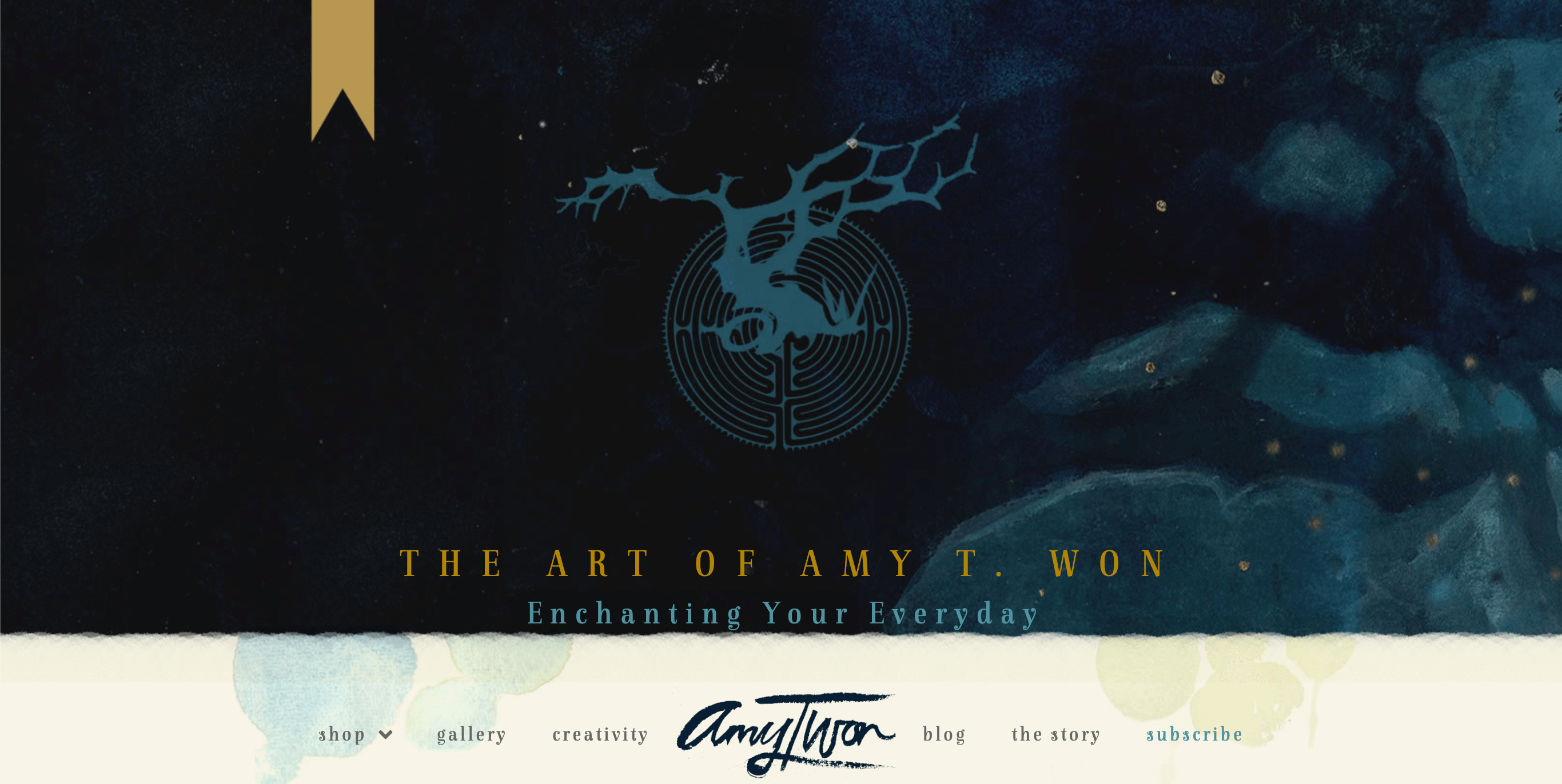
2. Shantell Martin
British visual artist Shantell Martin is known for her unique line drawing style that takes up her entire homepage. From the moment you land on her website, you can see exactly what her work is all about. These drawings are animated to move along with your mouse using custom JavaScript.

3. Tamar Halpern
New York-based painter Tamar Halpern’s website shows that you don’t have to do too much to make your website unique. The site uses a lot of white space to make the work the star, but the custom mouse and non-standard gallery layout are unique touches that draw the viewer into the stunning, abstract images.
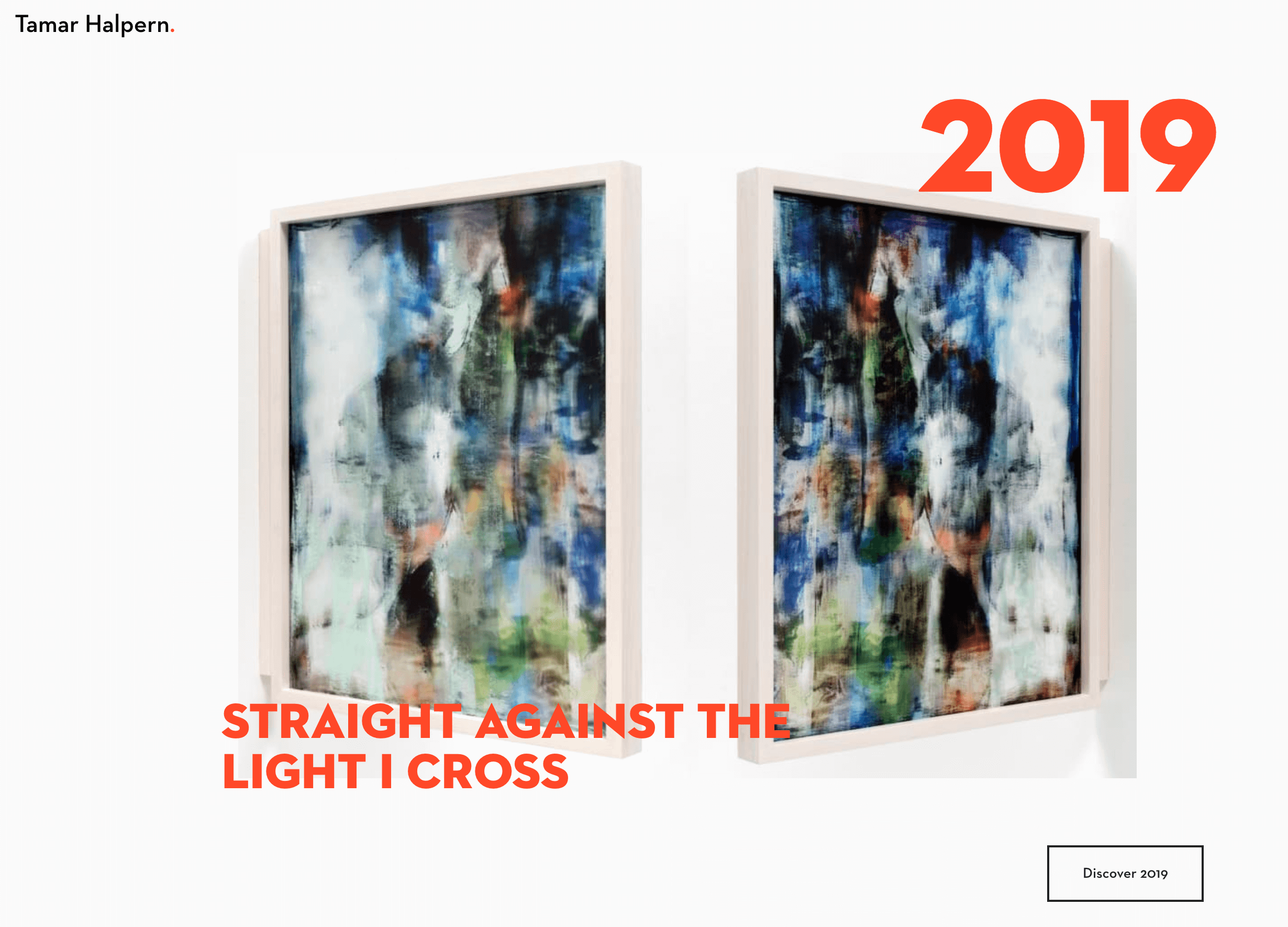
4. Olivia Truong
Olivia Truong is a product designer who uses an unconventional website design to stand out online. The bold colors, shapes that break the grid, subtle animations, and bold colors, make her website as much work of art as the work it displays.

5. Takesada Matsutani
Japanese painter, printmaker, and installation artist Takesada Matsutani uses scrolling anchors in his website to showcase his whole story in one page. The decades of work he displays on the site are separated by theme and era to avoid overwhelming viewers. The simple web design allows his story and his work to take center stage over the website itself. Scrolling websites like this one are becoming more popular for portfolio websites. Not only are they easy to use on desktop, but they’re more friendly for mobile users.
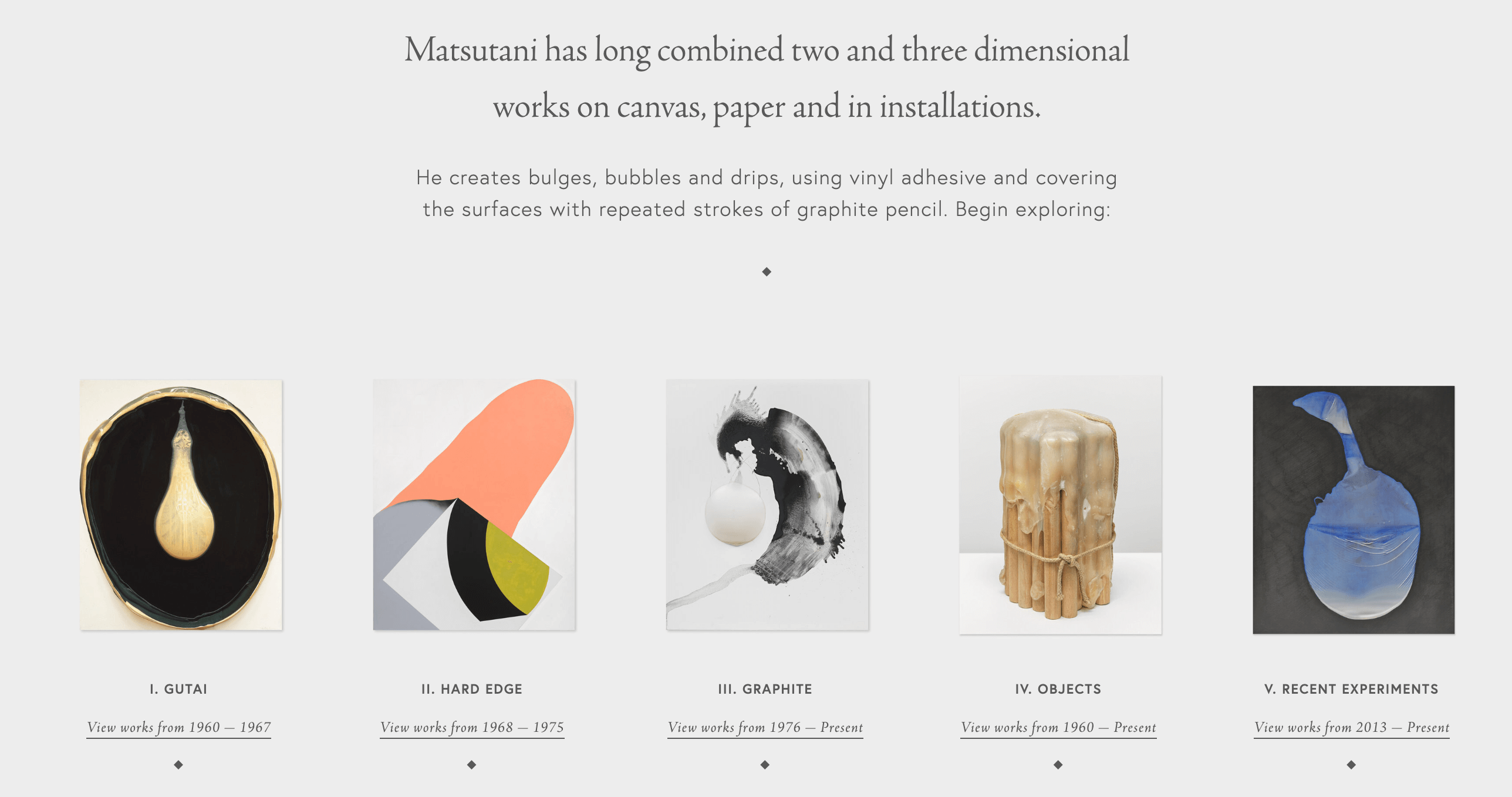
6. Louise Hourcade
Parisian painter and ceramic artist Louise Hourcade’s website demands visitors’ attention with a custom splash page with the simple word “bienvenue” over a colorful, lively painting. The rest of the website is fairly simple with a white background and contrasting text colors to let her vibrant work truly sing.
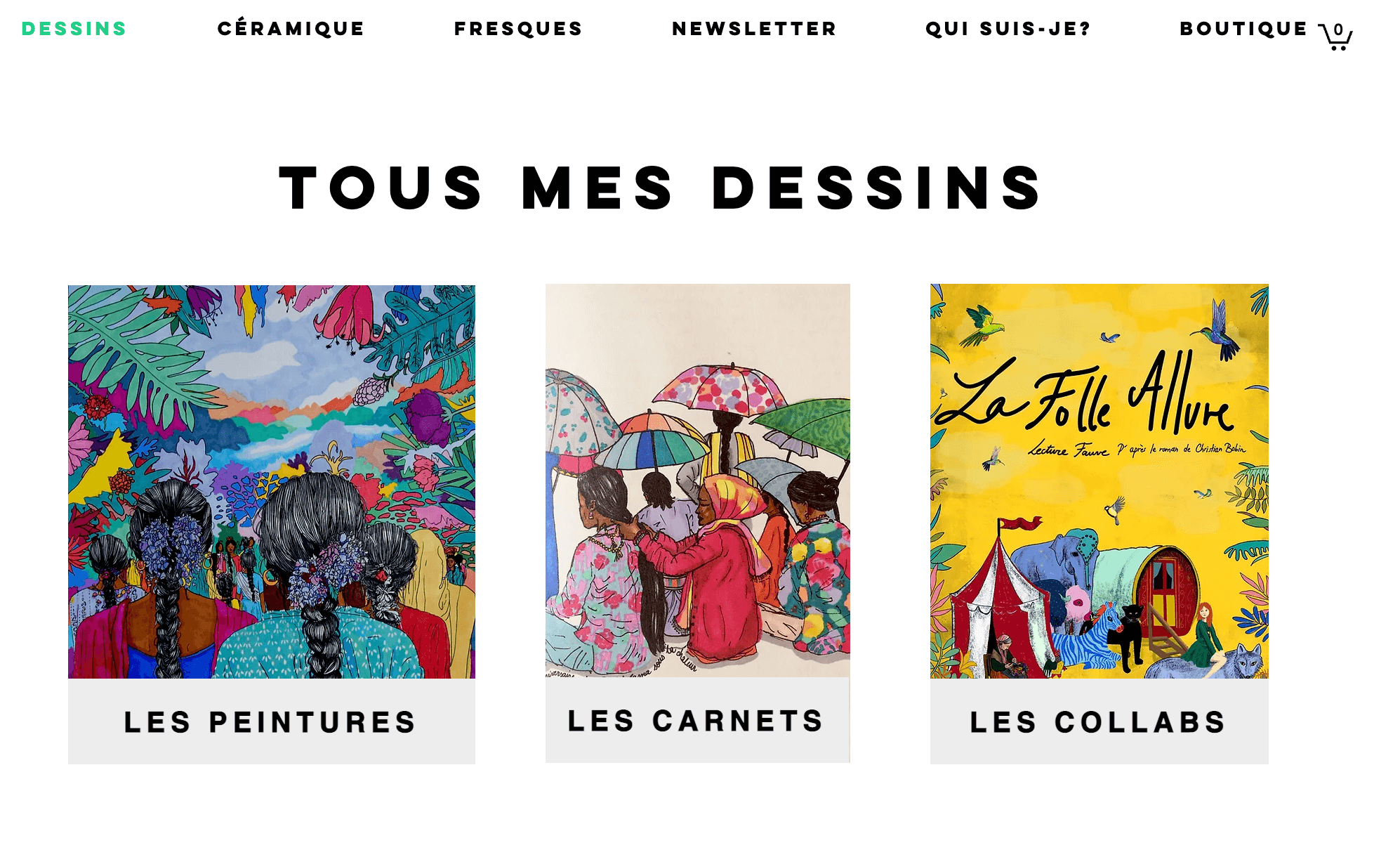
7. Asya Lisina
Russian cartoonist Asya Lisina’s website displays her remarkable drawings alongside clever design details. Her custom logo of a pink hand with an eye on the back reflects her style with a tiny space. The modern, light sans serif font reflects the modernity of her work.
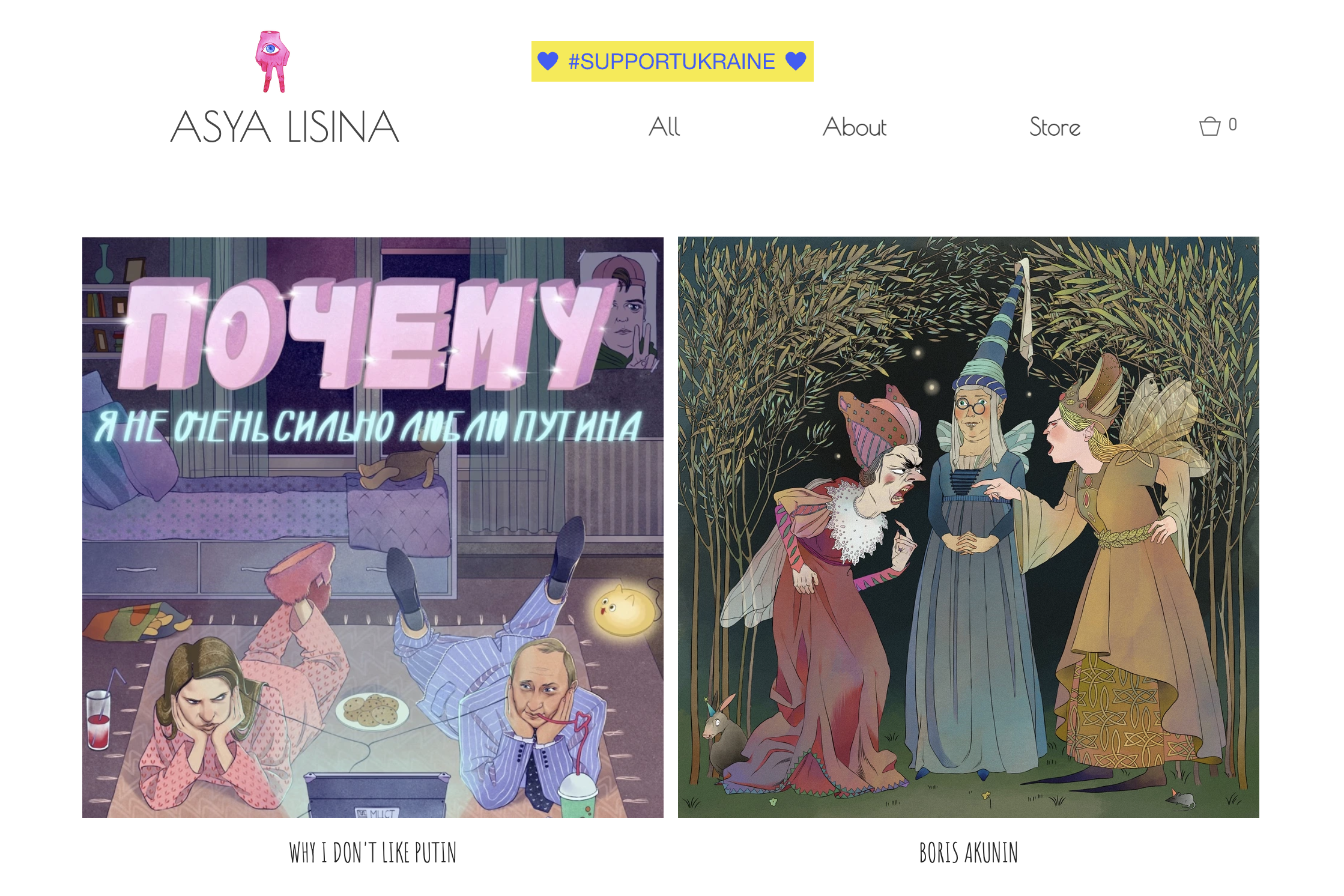
8. Charly Palmer
Award-winning painter Charly Palmer’s website’s background video is exciting, visually striking, and shows the viewers his values as an artist. In it, you don’t just see the work itself, but his creative process and the inspiring quote “art should change the temperature of the room.”
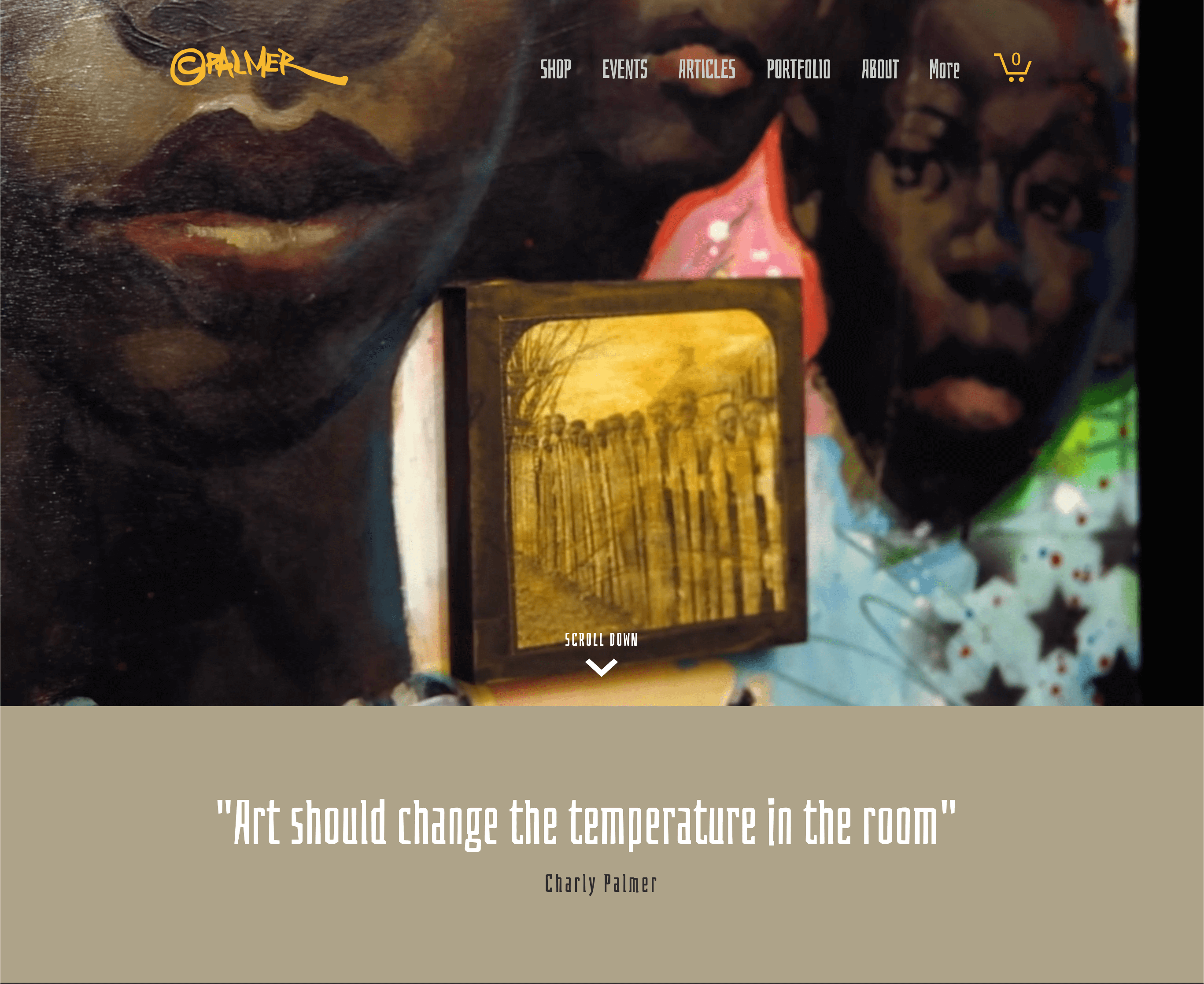
9. David Milan
Hand lettering artist David Milan’s website opens with an eye-catching portfolio of still images and videos that give the viewer an immediate sense of his colorful, outrageous style. Every detail of his online portfolio reflects his style and personality from the bold color accents to his custom-lettered wordmark logo.
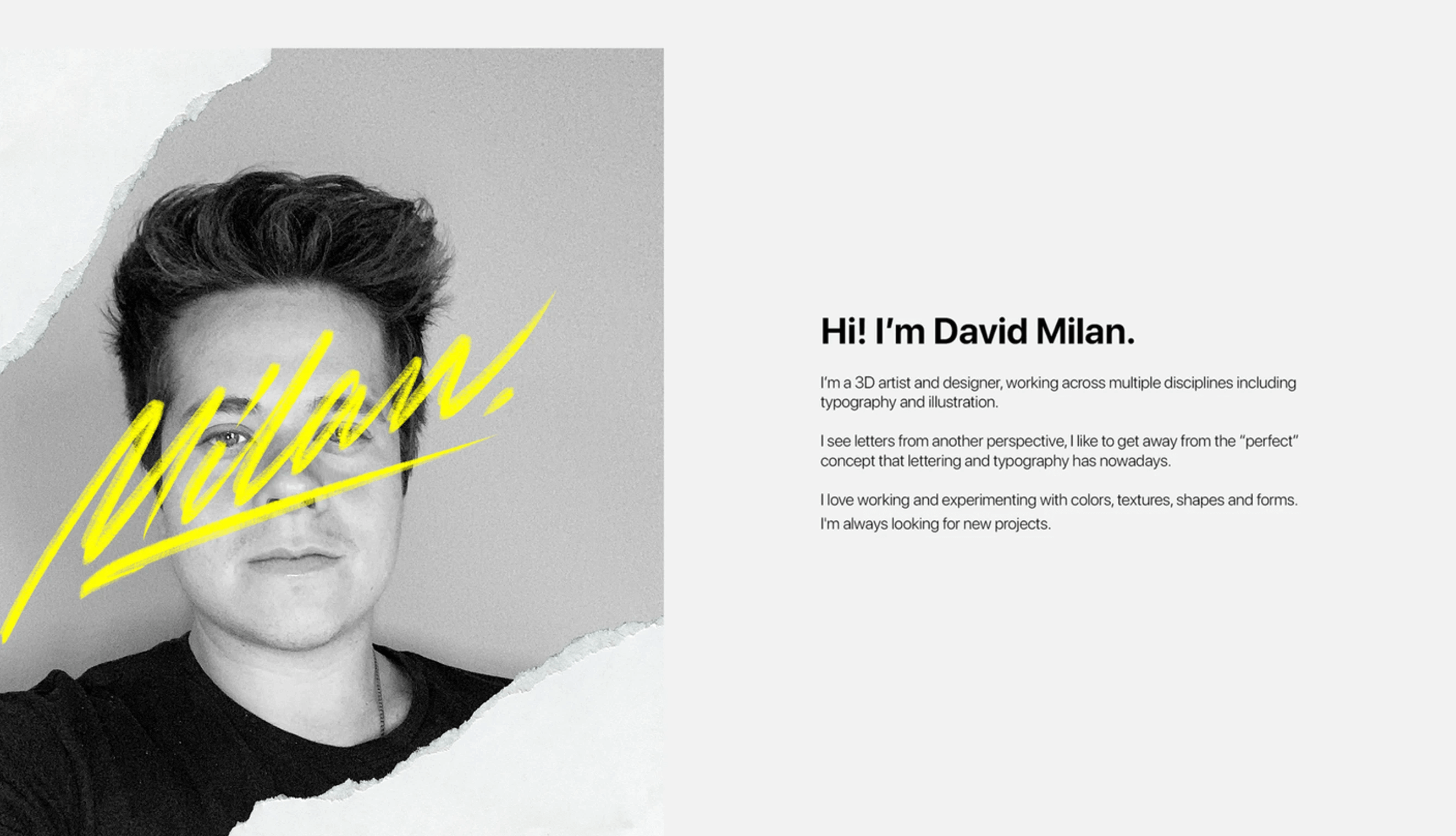
10. Jessie Bearden
Jessie Bearden’s great artist website opens with a colorful, animated self-portrait made of found objects. From there, visitors can easily navigate to her portfolio, contact page, and Instagram feed via the website header. Every page of her site is full of color, movement, and vibrant personality.
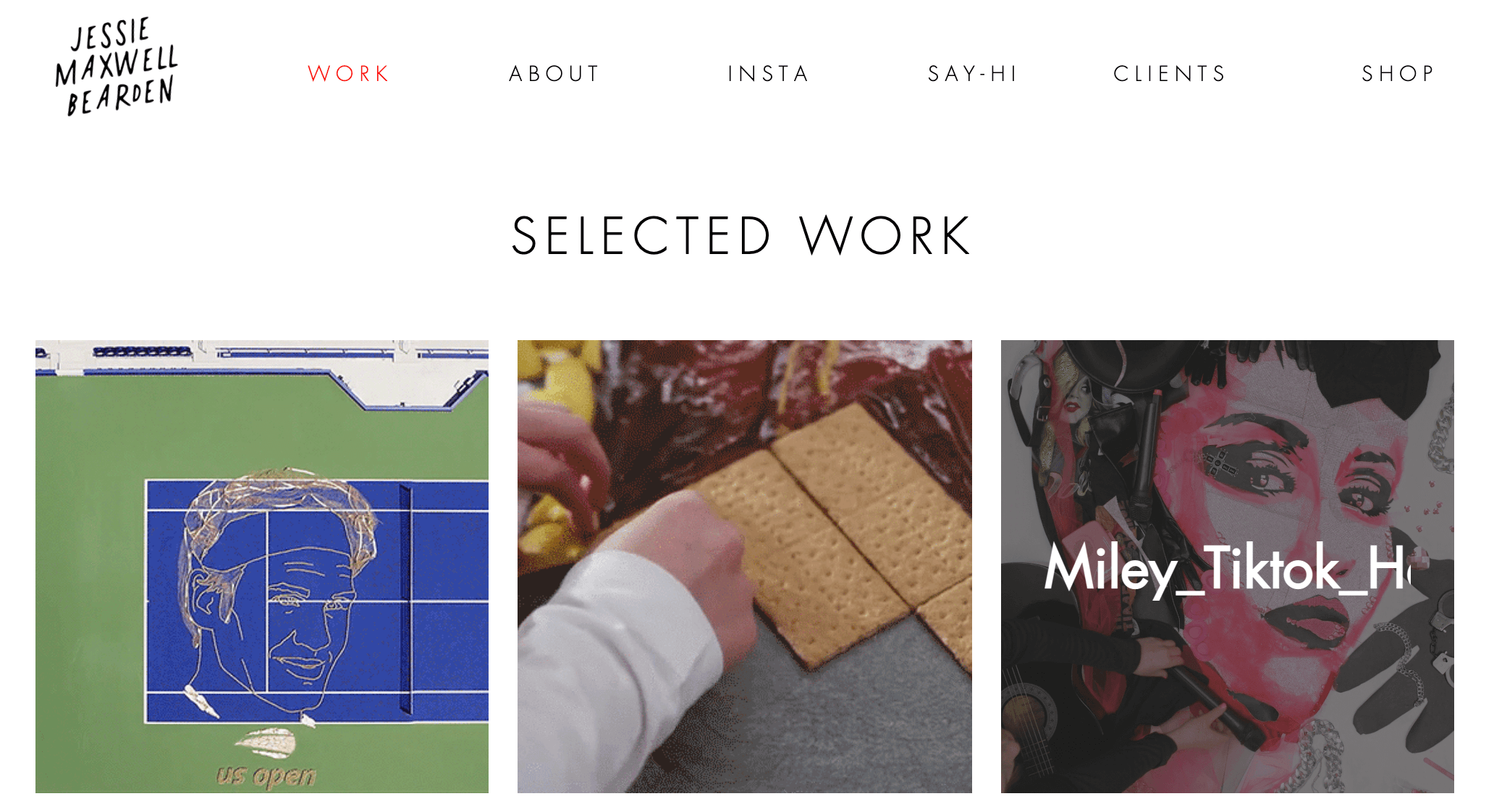
11. Timothy Goodman
You’ve probably seen New York City illustrator Timothy Goodman’s work on Chipotle bags, magazine covers, and social media. His website greets viewers with a bright yellow background contrasting against a black and white line drawing. His busy drawings that take simple items and words and make them lively and exciting are paired well with strategic use of color blocks.
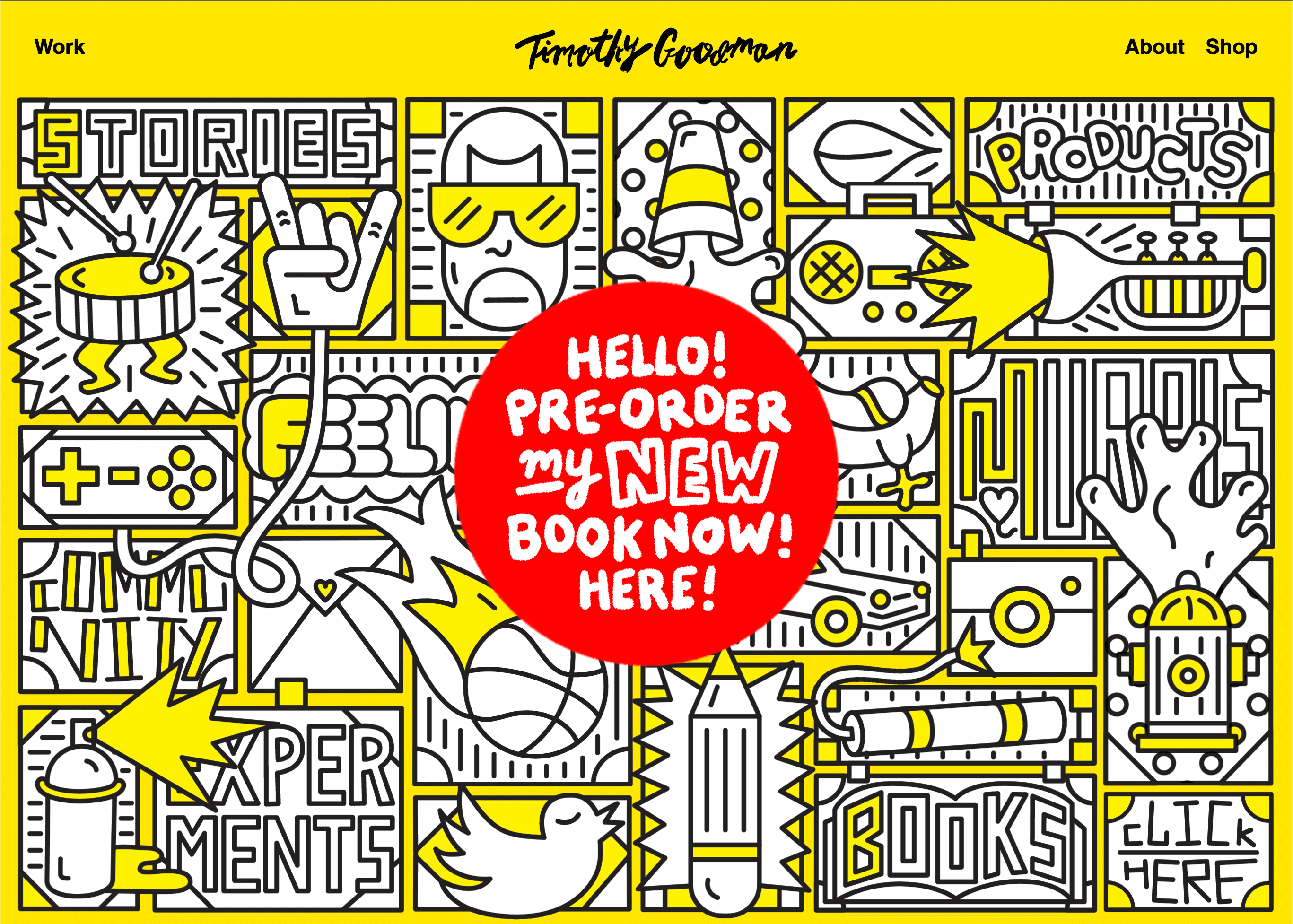
12. Ruifa Zenda
Ruifa Zenda’s website uses animation and unique imagery to make a relatively simple layout interesting. His online portfolio displays a wide variety of work throughout his career separated into pages for advertising, design, and art work. The work samples and the special effects on the site give visitors a distinct sense of his range, style, and what to expect from his work.
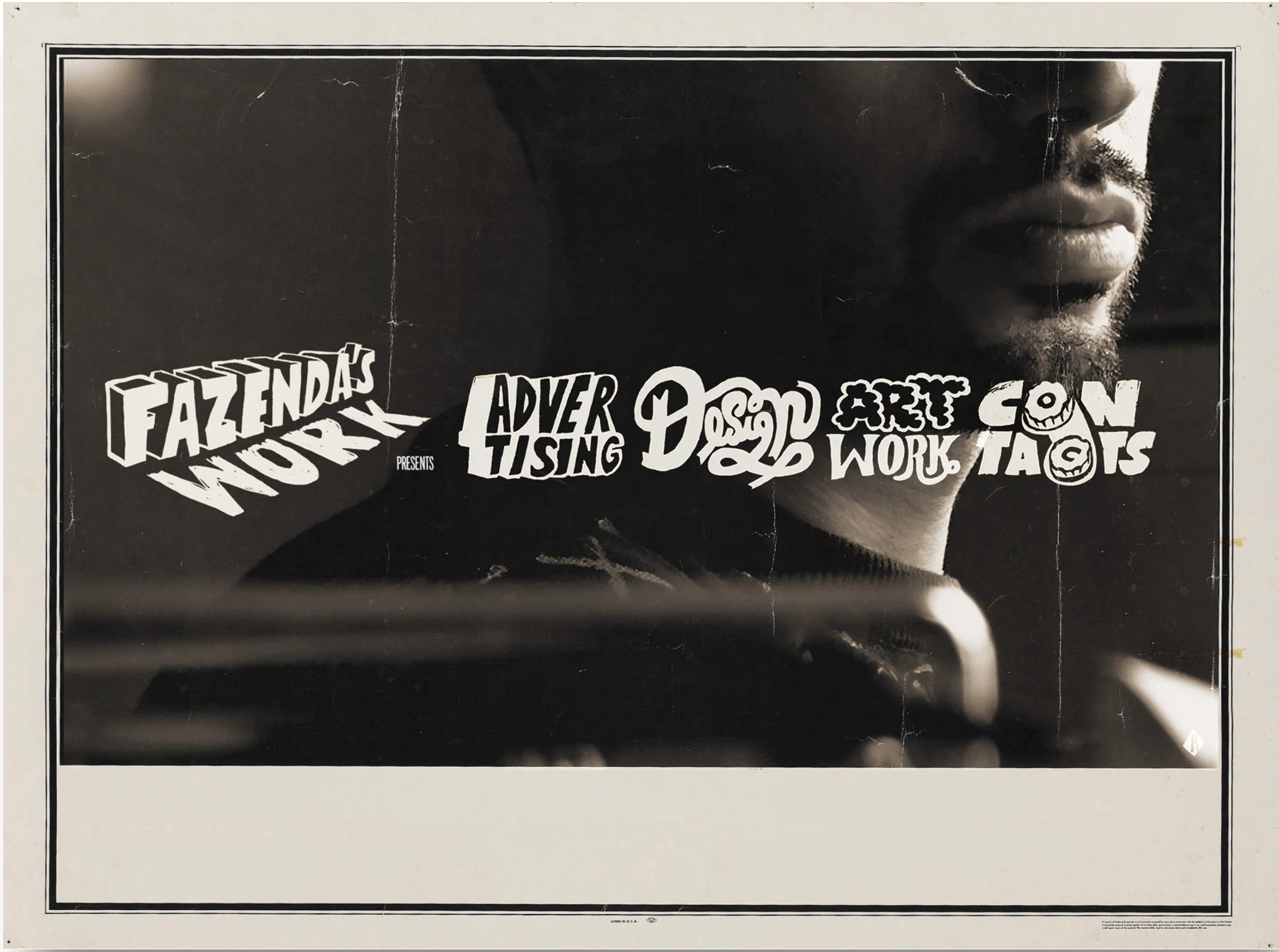
How Sav Can Help
Sav is all about helping creators succeed online. We provide features you need at prices you can afford. All Sav websites come with a free SSL certificate, mobile friendly optimization, SEO optimization, Google Analytics integration, and unlimited storage. Start your free trial today to take your artistic career to the next level tomorrow!
Newsletter
Popular
Top Articles
Recommended articles
How to Come up With Ecommerce Product Ideas
Whether you’re starting a new ecommerce business or expanding a pre-existing one, what products to sell online is an important decision....
Read moreHow to Create a Modeling Portfolio
What is a Modeling Portfolio? A modeling portfolio is a demonstration of your skills and talent you can show to potential employers and...
Read moreThe Best Side Hustles From Home to Try
Why Start a Side Hustle from Home? Earn Extra Money Being alive is expensive right now. Whether your financial goals are to pay off your...
Read more



